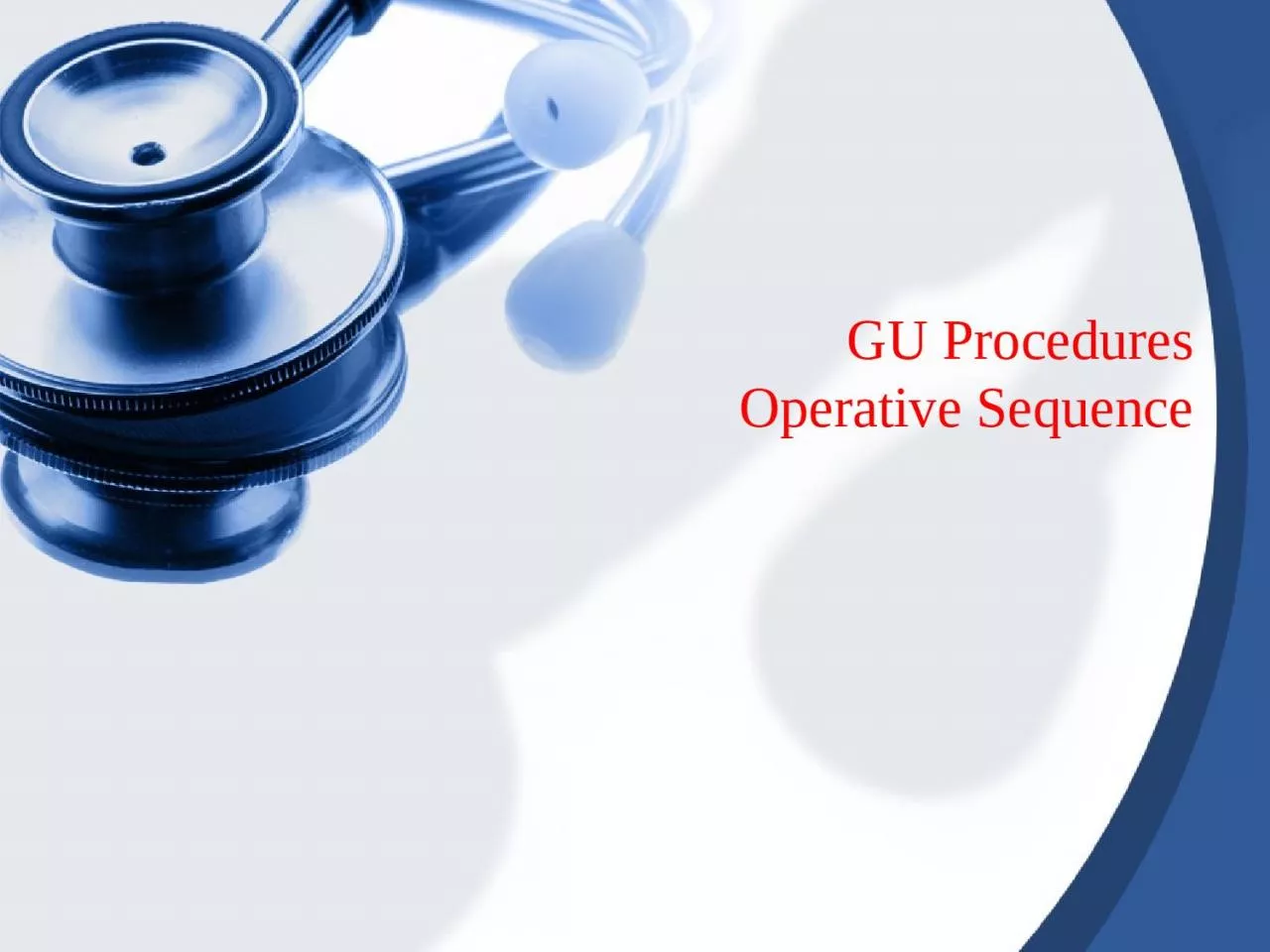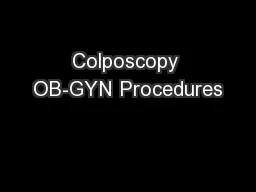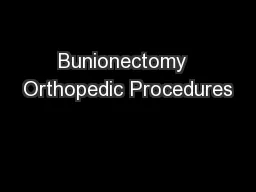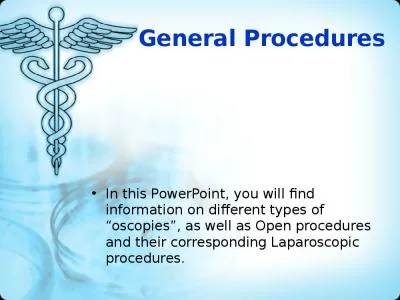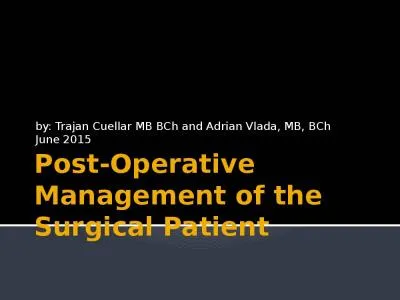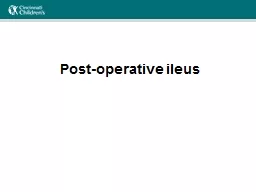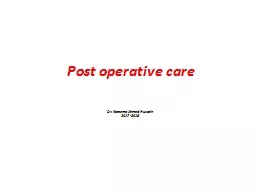PPT-GU Procedures Operative Sequence
Author : Heartbreaker | Published Date : 2022-08-03
Circumcision Overall Purpose of Procedure Performed to prevent infection and inflammation of the glans a lower risk of urinary tract infections penile cancer and
Presentation Embed Code
Download Presentation
Download Presentation The PPT/PDF document "GU Procedures Operative Sequence" is the property of its rightful owner. Permission is granted to download and print the materials on this website for personal, non-commercial use only, and to display it on your personal computer provided you do not modify the materials and that you retain all copyright notices contained in the materials. By downloading content from our website, you accept the terms of this agreement.
GU Procedures Operative Sequence: Transcript
Download Rules Of Document
"GU Procedures Operative Sequence"The content belongs to its owner. You may download and print it for personal use, without modification, and keep all copyright notices. By downloading, you agree to these terms.
Related Documents

